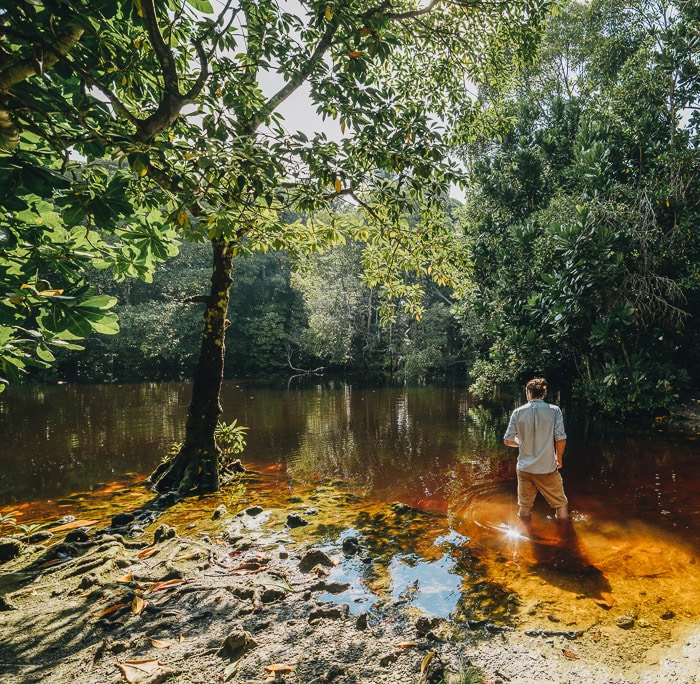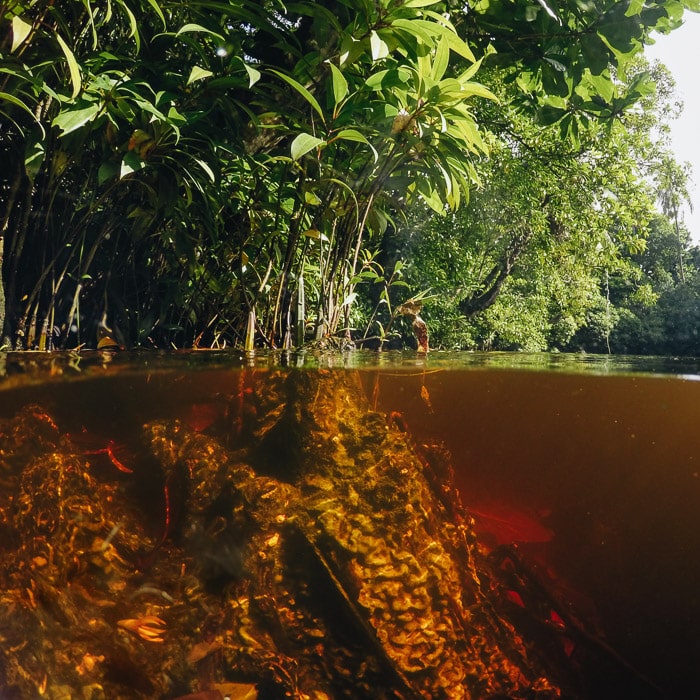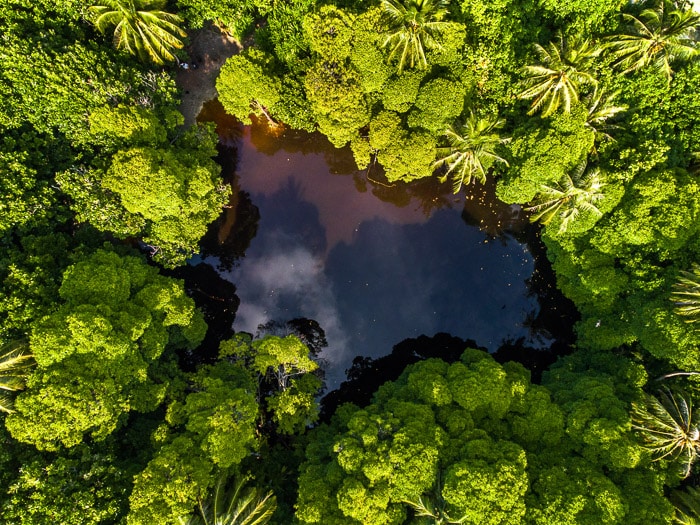Hidden Depths

Words by Daniel Bosley; Pictures by Aishath Naj
Most call it ‘bodu’ (big), some call it ‘paree’ (fairy/female jinn), and others even refer to it as ‘naraka’ (hell). Whatever you want to call it, Laamu Gan’s famous fengandu is undoubtedly one of the most interesting in the Maldives.
Having a fengandu – a lake or a pond – is relatively rare in the Maldives, with only around 40 of the country’s 1,192 islands known to have one type of wetland or another (though we’ve already stumbled on ponds that people seemed to have forgotten were there). But, most are not quite so scenic, so deep, or of such a striking shade of red as Laamu Gan’s landmark.
Lying in the dense jungle at the southern end of the Maldives’ longest island, the dimensions of the pond are obscured both by the encroaching mangroves and by local legend. The freshwater was tainted a little by the 2004 tsunami, though the abundant footu mas (tilapia fish) are notoriously unfussy.

Ask around the island and most people will smile sheepishly (always a sure sign a little folklore is forthcoming) before telling tales of the pond having no bottom, leading all the way out into the Huvadhu kandu; or of ropes being sent down to measure the depth and coming up charred at the end. Combined with the pond’s burned hue, it’s hardly surprising that the unofficial name for the pond has become ‘Naraka Fengandu’.
In reality, islanders have measured the depth of the pond, with divers making it down 15 metres (49ft) before stopping at the mouth of a cave they considered structurally unsafe to enter. This would actually make the pond deeper even than Fuvahmulah’s Bandaara Kilhi – the largest lake (by volume) in the archipelago. Others have also reported finding similar ‘holes’ nearby, perhaps suggesting an underlying hollowness in the reef structure.
As for the colour, the fengandu is surrounded by a forest dominated by kinbigas (box-fruit trees, hence the cuboid clutter) and randoo (red mangroves); both these plants contain tannins, used for producing natural dyes, and can be seen dropping regular deposits into the water during even the briefest of visits to the site. Some reports have suggested that the colour arrived within living memory, lending a further murkiness to the red waters; obscure algae also make a plausibly vague theory for such phenomena.

Alternatively, apart from its more prosaic title, people (and Google maps) have taken to calling the area ‘Paree Fengandu’, though there doesn’t seem to be any specific story linked to this name*. While jinn, sea monsters, and haunted areas on islands are common in Maldivian folklore, those specifically linked to such inland water bodies are almost non-existent. (Dan didn’t even know there was a Dhivehi word for ‘fairy’ before we started researching this area).
Other than for brave swimmers (hell is actually a little chilly compared to the ocean shallows, less than 100ft away), areas like this have little practical use for islanders in modern times. Perhaps as a result, relatively little is known about the historical and cultural uses for such places, though on such tiny islands, everything has had its use at one time or another.
A good example of this comes from another familiar fengandu, the so-called Ranin Hanaa Fenganda in Seenu Hithadhoo. Apart from going by the wrong name for years, this site has been linked to both bathing and fanditha rituals, and is today one of the most attractive spots in the new Addu Nature Park. (We should really do a story on that too!)
So, perhaps the real story behind Laamu Gan’s Bodu Fengandu goes even further still. Either way, it’s a wonderful place to visit while you ponder the pond’s true depths.

*please let us know if you’ve heard any stories related to the pond and we’ll update this story

i went there and went to the most deepest part. it was fun while it lasted.